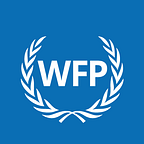Deep diving into social protection evidence
WFP’s Chief of Social Protection, Nicolas Bidault, shares his thoughts on a new social protection evidence summary, synthesizing lessons from 44 evaluations
The Office of Evaluation recently published a summary of evaluation evidence on social protection — could you share some reflections on your overall experience with this process and product?
This summary of evidence was the first of its kind for Social Protection. I don’t think I’ve seen such a product before. It may have existed, but for us, it was a powerful, unique product.
In terms of the process, it was enormous: dissecting 44 evaluations from the last five years and extracting results from a wide range of topics, not only evaluations that focussed on social protection.
This allowed us to reconstruct what constitutes social protection, including contributions from school meals, cash-based transfers, public works, and others. Many units in WFP were not aware of how much their work contributed or related to social protection.
The process has been incredibly informative, helping us redefine what constitutes social protection, and highlighting how many of our programmes indirectly contribute to social protection, even though they weren’t initially designed with that objective in mind.
It identified a lot of additional benefits of WFP’s work in social protection. For example, supporting local economies and the obvious multiplier effects, but also improving social cohesion and peacebuilding.
Then, it was a strike of luck in terms of timing, as we presented the summary of evidence to the Executive Board at the Annual Consultation on Evaluation (ACE).
Delving into more detail, could you highlight insightful evidence from the summary?
The cross-linkages with other units and country offices were insightful, as I mentioned. Most of the Country Strategic Plans presented to the Board include social protection and the summary of evidence helped us articulate the connections.
The evidence pointed to our clear comparative advantage, particularly in areas across the triple nexus, and our ability to do social protection in the context of fragility. This is also something we hear when we speak to external partners and donors.
The evidence showed what we need to do more in terms of measuring the direct gains around system strengthening, through social protection. And I think we will be in a better place to do that, moving forward, because we have those indicators now in the corporate results framework, and the activities are better integrated into the Country Strategic Plans.
However, what was interesting, is the fact that WFP still contributed a lot to systems strengthening, even though the evaluations considered in the summary of evidence, were not meant to be social protection programmes.
For example, through our work as technical partner to Government in terms of strengthening national policies, strategies, and coordination mechanisms or improving national capacities, WFP contributed to strengthening the overall system architecture and enabling environment.
How will the Social Protection unit use the results from the summary?
We need to communicate more. We brought the evidence in front of the Board, and that generated a lot of comments and interest, especially because it came from the Office of Evaluation as an independent and neutral voice. This seal of approval is of high value.
We now need to take the evidence to our internal decision-makers, and we’re already planning a webinar on that.
The findings also point to programme design opportunities. How much can we embed what we’ve learnt from the evidence summary into new programmes?
Thirdly, we need to package the messages externally in a focussed way. We know that social protection contributes to peacebuilding and social cohesion. So when we speak to partners and donors, let’s make that known.
How in your view could the use of evidence be better integrated across WFP, and what are some of the challenges that must be considered for evidence use to be optimized?
I think that as WFP we sit on a lot of evidence, but we are not making use of it in the most optimal way.
This product created a process to look at the whole evidence universe, assess what we have, pull it, and digest it.
If we don’t go through such processes, we run the risk of missing out on the wealth of evidence in WFP. So I think processes like developing the summary of evidence are there to make the most use of the evidence in WFP, and that is fantastic.
